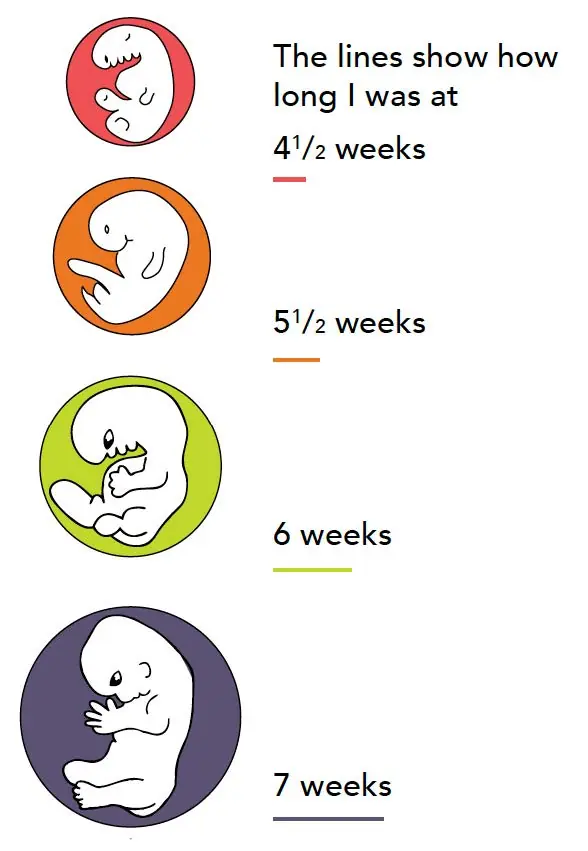What are CHDs?
‘Congenital’ means ‘from birth’. Congenital hand differences (CHDs) occur when a child is born with a hand that had formed differently from what we would expect of a ‘normal’ hand. This happens in up to 1 in 2,000 live births. Please note that we prefer the term ‘differences’ rather than ‘abnormalities’ because that is exactly what it means, i.e., it is just ‘different’ rather than ‘abnormal’.
How do CHDs happen?
Embryology is the study of how a foetus develops. This image shows how the human embryo grows inside the womb. Note that the hand is fully formed within 4 to 8 weeks of a woman becoming pregnant, and the disturbance of growth occurs earlier at a point where she does not even know that she is pregnant.

The developing embryo uses a network of signals which work together to form the hand. This happens in three directions to produce the 3D shape of the fully developed human hand.
One of the most important regulators of this development is a protein called sonic hedgehog (SHH). Sometimes, there is either too much or too little SHH, which causes the hand to develop differently.
Why has this happened?
Depending on when and where in the growth pathway these signals differ, development of the upper limb and hand will be affected in different ways.
It is not yet clear why CHDs happen. They may be due to genes – which ‘plan’ how the foetus develops in the womb – or the environment in which the baby grows inside the womb, or the external environment.
However, we know that most CHDs happen for unknown reasons and are not related to the genes or behaviours of parents. It is important to remember that parents are not to blame when CHDs happen.

